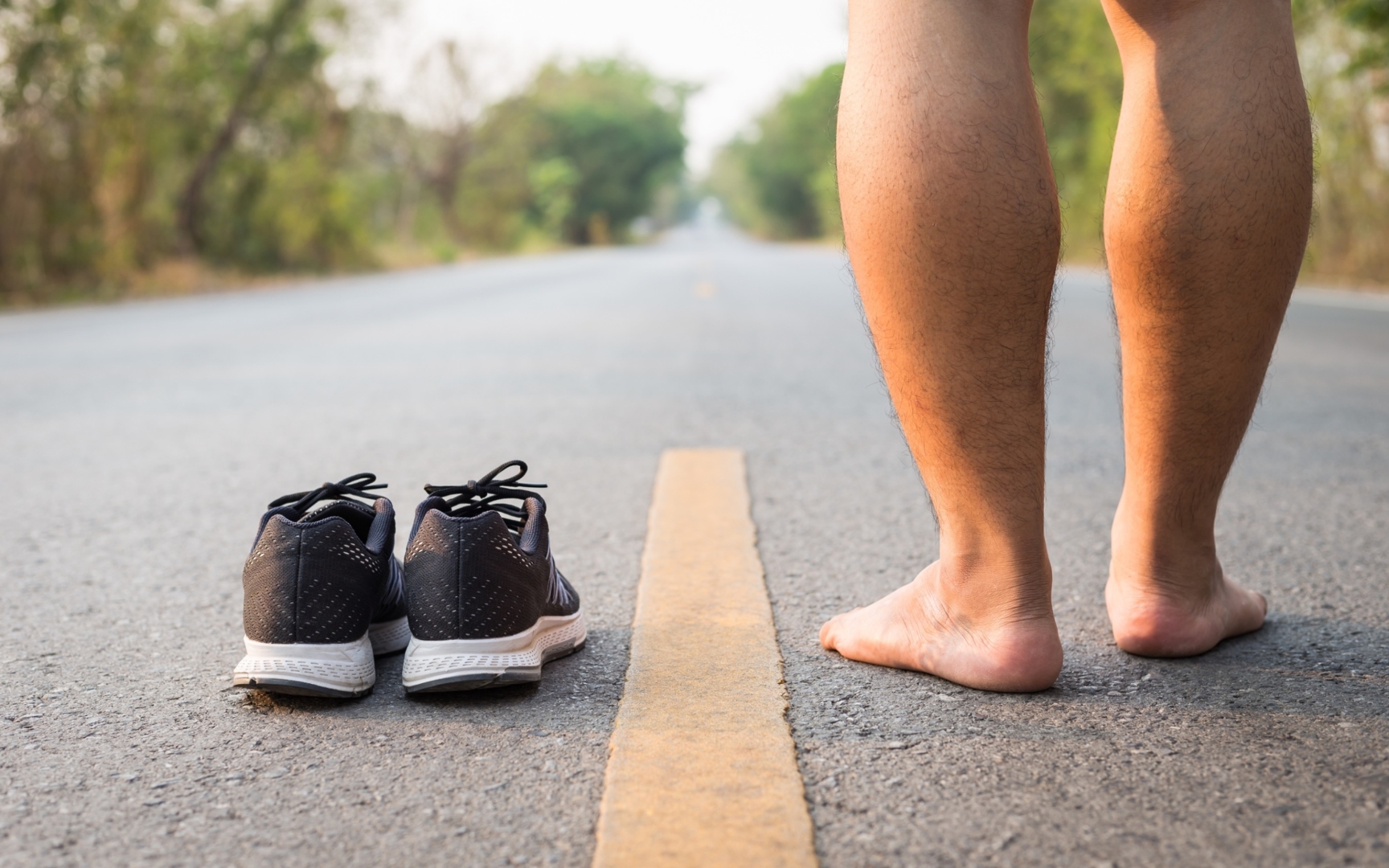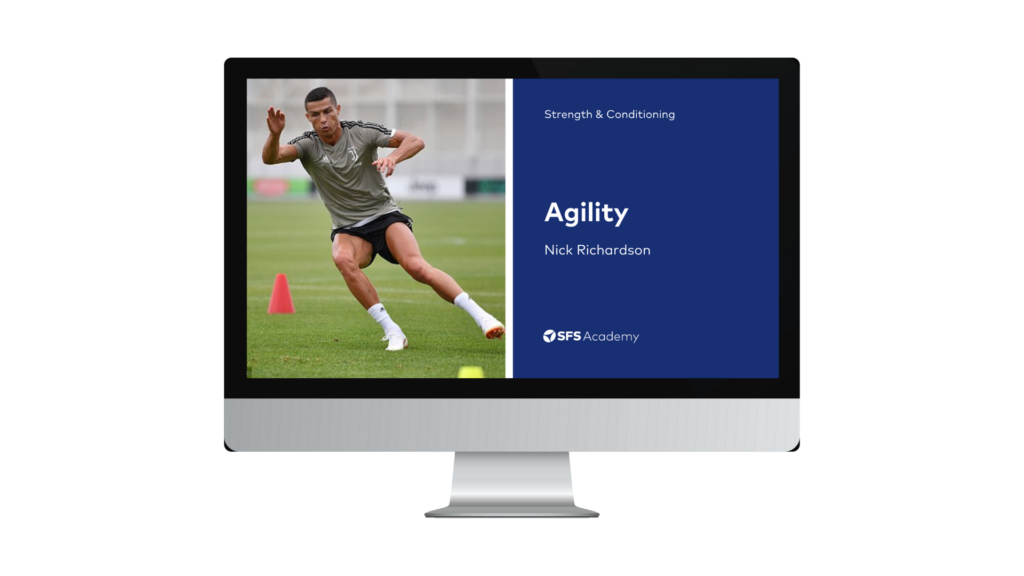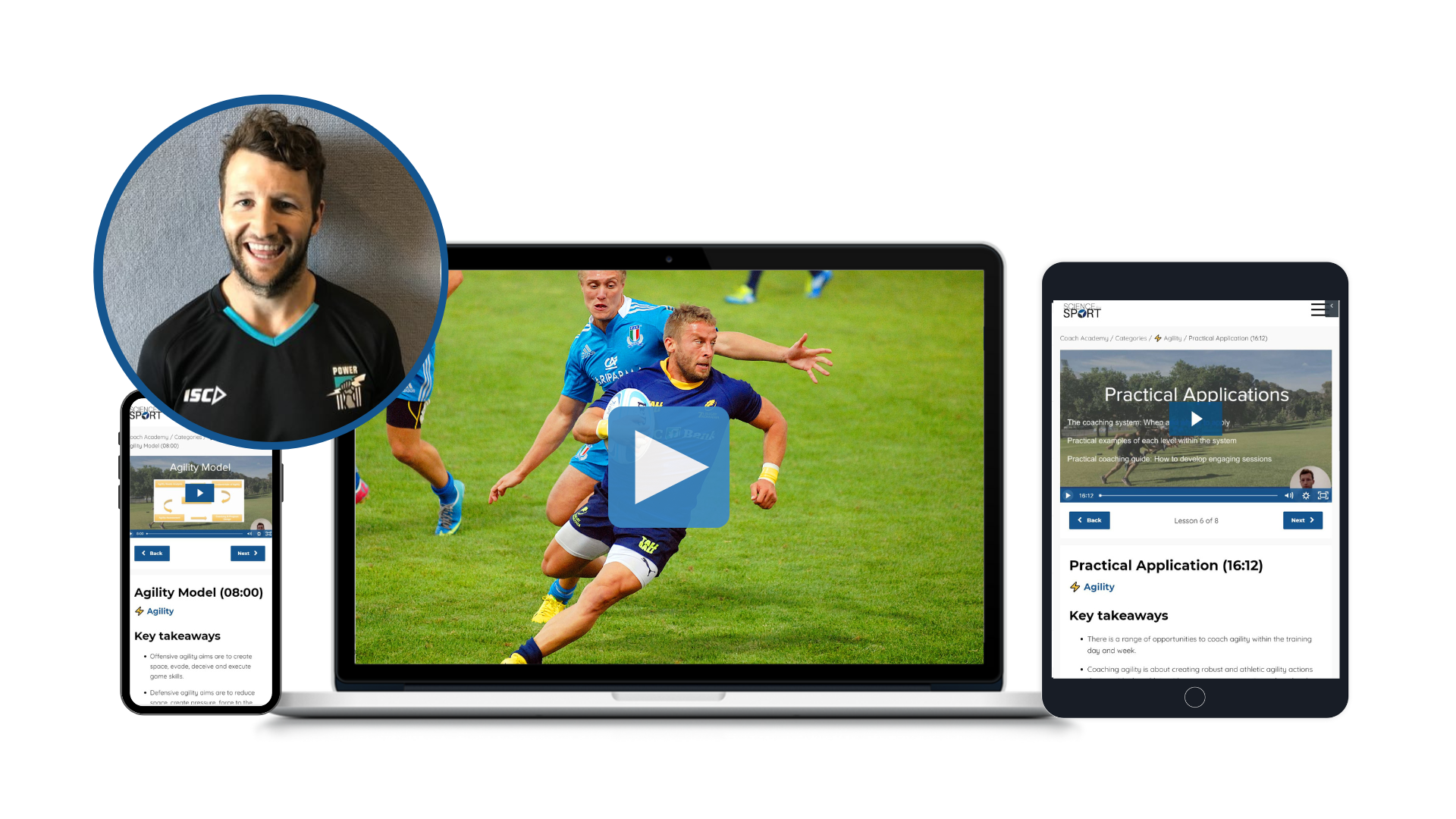Barefoot running: Pros, cons, considerations and planning
When done correctly, barefoot running has the potential to improve strength of the foot and improve running economy as well. With that being said, proper transition from standard training and running shoes is vital.
Barefoot running vs. shoes: What are the pros and cons?
Runners have a lot thrown at them these days when it comes to their feet. When we go shopping for running shoes, a lot of terms get tossed around that consumers are expected to understand and pay top dollar for. Nowadays, most running specialty stores do a gait analysis where they watch you walk or run and recommend a shoe based on that.
Heel strike, forefoot strike, barefoot running; everyone has an opinion on what your foot should be doing and how it should be hitting the ground when you run. With these varying opinions along with styles of running, confusion is common.
The shoe companies have added to this by advertising their various shoes as stability and neutral to the consumer. It can take a lot of time and effort to understand the different types of shoes available and how we should use them, so let’s start out with some basics around the structure of running shoes.
Stability or neutral?
Sneaker companies target runners based on the type of shoe that their foot should fit into based on its structure. Stability shoes are meant for runners who overpronate – or have a flat foot. Pronation is a normal mechanism of our foot which helps it absorb shock from the ground. Through the gait cycle, the foot will roll and tip inward from the heel to the front of your foot in a lateral to medial direction. With this, the foot absorbs the shock of the ground and dissipates it across the foot.
Although this is a normal process, some feet however will overpronate and turn inward a bit too much. This may be caused by a foot with a flatter arch and cause the big toe to push off incorrectly. This can lead to callus build-up, along with issues like plantar fasciitis and Achilles tendinopathies.
A stability shoe is designed with a thicker and denser material that is built up on the inner part of the shoe to stabilise that rolling-in mechanism. This helps to give our arch a lift and reduce the flattening of it as we walk or run. Some orthotics or insoles will be built in this manner to mimic this action as well.
On the other hand, a neutral shoe is targeted to those with a neutral pattern foot strike or those with a medium to higher arch. With this type of foot, the arch can be more rigid and when this occurs, the forces that come from the ground when we strike it do not dissipate efficiently.
This type of shoe may assist in correcting over-supination, which is the opposite of pronation. In this, the foot does not roll from lateral to medial and instead stays lateral, continuing to invert that way. Neutral shoes are designed with excess cushioning on the outside of the shoe instead of the inside to provide movement to the foot. This promotes more absorption to the ground on the outer arch and allows it to move through the gait cycle more efficiently.
When it comes down to it, pronation and supination are normal processes that our feet go through on a daily basis. The neutral and stability shoes are designed to provide the necessary support or cushion to assist the foot in maintaining a proper gait pattern when walking and running.
To provide further options within these categories, shoe companies have designed these neutral and stability shoes with different levels of cushioning and support, which can range from mild to moderate to high cushioning or support. Usually, each shoe brand stocks at least one shoe in their line for each category.
When choosing the best shoe for you, understanding the types of shoes and their purposes can help to reduce injury. At the end of the day however, everyone’s foot is different. Just because your foot moves in a neutral pattern or over-pronates it does not mean the shoe will fit as it should.
Always choose the shoe that is most comfortable when walking and running – a shoe should feel natural when you step in, whether it fits your foot that is over-pronating, neutral or over-supinating.
A new player in the shoe game
Over the past decade or so, there has been new research and ideas when it comes to how shoes and training are designed. One theory that has gained a lot of attention is barefoot running.
Barefoot running became popularised thanks to the best seller “Born to Run” by Christopher McDougall. In the book, McDougall tells the story of the Tarahumara Indians of Mexico’s Copper Canyon, whose lifestyle consisted of barefoot activity. Through the book, McDougall describes their amazing athletic feats and lifestyle, which was all done barefoot.
Following this, companies like Vibram and New Balance began to make athletic shoes that mimicked this barefoot design. The shoes were designed without a heel counter, meaning the shoe is on even surfacing from the heel to the front. This in essence allows our foot to naturally hit the ground without the support or cushioning of the modern sneaker.
Although some of claims have been debunked over the years, the barefoot running style garnered excellent evidence for increased efficiency with running gait patterns especially when paired with exercises targeted for intrinsic foot strengthening.
The overall point of barefoot running is to improve foot strength, both on the inner and outer portions. With this, the foot should be able to tolerate normal running and walking without the support given from modern day sneakers.
When we walk or run without shoes, the soles of our feet are unprotected and take on excess load, and with this, the muscles at the bottom of our feet are forced to work. This group of muscles are known as the intrinsics of the foot – together, they are 20 small muscles that make up the bottom of our foot and have attachments to the bone structure of the foot.
These muscles are extremely small compared to others in the body but still require strengthening – their importance is to provide sensory input to our feet and allow our joints and foot structure to function properly within the space they occupy on the ground. They also have a responsibility in the strength and height of our arch. They are seldomly thought of in routine strengthening programs but can go a long way in making runners more efficient.
When the foot is without support from a shoe during activity, the sensation to the muscles and nerve innervation of the foot increases. As this happens, those small intrinsic muscles are awakened. The muscles are forced to push and pull on one another and work to stabilise, since they don’t have the luxury of support.
Over time as we transition from static to dynamic movements, these muscles are forced to be more efficient to maintain our stability and arch. When we take an activity like running and do it barefoot, we are forcing these small muscles to stabilise our entire lower leg. This allows the muscles that attach to our foot to function properly and move the rest of our kinetic chain more efficiently.
With all of this, the foot should be more resilient to outside forces and in essence have less of an injury risk.
This all sounds great on paper, but what happens when those small muscles of our foot are not ready to take on this load? The issue with barefoot running comes into play when people skip the transition out of running sneakers. They go straight from lengthy running sessions with shoe support to trying it out on bare feet.
So why can’t we just jump right to barefoot? It all starts with the structure of modern-day running shoes. Most neutral and stability shoes have a heel drop of 8-12mm from the back of the shoe to the front (forefoot) of the shoe. What this means is there is a greater rise at the heel of the shoe compared to the front of it. This creates a slope effect and is designed to support our heels at the initial contact of our walking and running patterns when we first hit the ground.
When we do not have that protection from our shoe, our heel and forefoot are at a level playing field. If our foot transitions away from this heel counter too quickly, injuries can occur. This is mainly due to the fact that we have more natural padding at the heel of our foot compared to the forefoot. Injuries in this area may include stress fractures, plantar fasciitis and Achilles pain as well as our foot taking on more stress than it is accustomed to.

How to start barefoot running
All in all, when deciding what type of runner to be, there are many factors to look at. As discussed before, the type of foot you have and the mechanics that it performs are important to look at. People who over-pronate or have a flatter foot will usually have more success with a stability shoe. People who under-pronate or supinate tend to have a higher arch and have more success with a neutral shoe. If you are still having injuries or not satisfied with your performance, barefoot running may be the way to go.
As discussed before, barefoot running depends a lot on the small muscles of your feet. The intrinsic muscles of your feet work to stabilise your arch and foot to absorb the shock of the ground and balance our body weight. When barefoot running, here are a few things that may change and be beneficial:
-Foot strike: moving from a heel strike to a mid or forefoot strike. This should help to reduce shock from the ground and dissipate it across the foot instead of it centering in one location. This can help with especially reducing incidence of stress fractures.
-Stride length: should decrease as the foot strike moves forward. This will create a higher cadence or step count, causing less work for the rest of the body. A shorter stride preserves our energy more efficiently.
-Ground reaction forces: will decrease as you take a higher step count. You take on a higher total volume of contact but spend less time total on the ground due to the decreased stride length.
With these changes, one should expect to become a more economical runner. Although your speed may not necessarily change, your running form should improve by taking on more efficient striding and posture. This transition over time will put less stress on your feet than if you went straight from using shoes to barefoot running.
How to transition to barefoot running
Barefoot running and training are an alternative to try for athletes dealing with previous injuries or trying to improve performance. When done correctly, barefoot training has the potential to improve strength of the foot and decrease the risk of injury as well. With that being said, proper transition from standard training and running shoes is vital. It may take a few weeks along with various trials to stay consistent with it. Here are a few tips:
-Do not jump from using sneakers one day to barefoot running the next. The transition takes time and should be planned out. Gradually increase your mileage as tolerated and use a run-walk method if needed.
-Practice an increased cadence in sneakers: when we run barefoot, the idea is to strike on the middle or front part of our foot. We do so by moving our feet faster with a decreased stride distance. This should take our initial contact off of our heel. To practice, try running to a song with a high beats per minute cadence, and land your feet on the beat of the music, and do so in blocks of 30 seconds–1 minute. Ideally, in order to move our foot strike forward, we want to experience a range of 170-180 steps per minute combined on both feet. A metronome can be used for training to match step count to a consistent beat.
-Train barefoot: Before barefoot running, start walking and going without shoes in the gym. Try squats, lunges and resistance work barefoot. Performing these movements barefoot will begin to build the proper strength needed for running. With this, adding in balance training while barefoot will also go a long way in increasing strength.
-Isolate those intrinsics: Short foot, or arch doming, is a technique to strengthen up the muscles that control our arch height. Use this to isometrically contract the small muscles of the foot with single leg balance and other closed chain activities like lunging and squatting. The exercises can also build core strength when performed properly.
-Ditch the bulky shoes for something with a smaller heel drop. Most running shoe companies offer a low-profile sneaker with a lower heel drop (0-4mm instead of 8-12). Running in that type of shoe prior to going completely barefoot will help your feet become accustomed to the change in forces.
-Strengthen the hips: When we are balancing on one foot with running, it is the outside hip muscles called your abductors which keep our bodies level over our centre of mass. These muscles help to not only keep our balance but also to bring our legs laterally. Known as the gluteals, these muscles are important stabilisers for our lower leg along with our lower back as well. These exercises can be completed with body weight or with resistance.
-Focus on your mobility: Consistent stretching of your calves and hips can improve your running form. Spend time with a foam roller on the front and back side of your hips along with mobilising your foot with a tennis ball. Having flexibility in our hips and calves allows our stride to progress through the full length without compensations.
The bare essentials of making a decision on barefoot running
When deciding whether or not to try barefoot running, always consider your own body and the injuries that you may be dealing with. Unfortunately, injuries can occur when transitioning to barefoot running and should not be pushed aside. We must consider our own previous injuries along with any other conditions we are dealing with when training.
When thinking about your own running and making a change, it is always a good idea to consult with a fitness or rehabilitation professional. Getting the foot itself strong may not be enough for the transition to succeed, as we have to always think about what else is going on. We should always be mindful of compensatory movements that can happen at our hip, knee or lower back which negatively affect our feet.
Remember, running is a full body sport and training the entire kinetic chain is vital to our success.
[optin-monster-shortcode id=”czosk0qsqzzsryj6gwot”]




